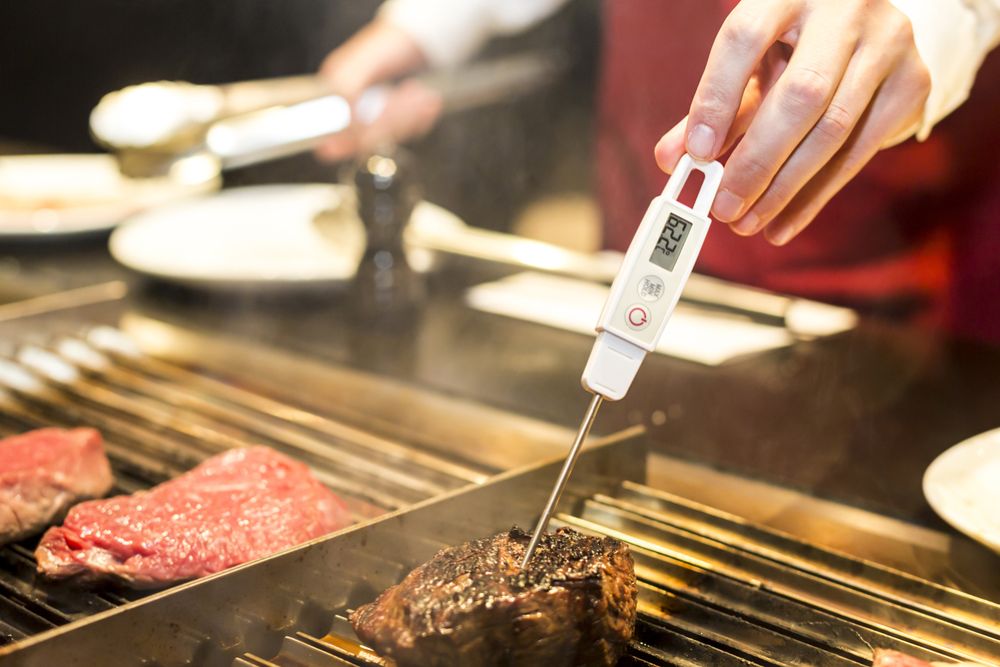Cooking meat to perfection is a blend of timing, technique, and temperature — and nothing ensures more accurate results than a reliable meat thermometer. Whether you're grilling steaks, roasting a chicken, or preparing a holiday turkey, the right thermometer removes the guesswork and guarantees that your food is not only delicious but also safe to eat.
But with so many types of meat thermometers available, from instant-read models to wireless smart devices, choosing the best one for your kitchen can be a challenge. This guide breaks down everything you need to know to find the perfect thermometer for your cooking style, budget, and accuracy needs.
1. Why a Meat Thermometer Is Essential
Even the most experienced home cooks can’t determine doneness by look or feel alone. Internal temperatures are the only reliable way to ensure meat is cooked safely without overcooking.
Top Benefits:
-
Food safety: Prevents undercooking by confirming meats reach USDA-recommended temperatures.
-
Better taste: Helps avoid overcooking, resulting in juicier, more flavorful meals.
-
Precision: Especially useful for thick cuts, slow-roasted meats, and barbecuing.
-
Consistency: Delivers repeatable results across multiple cooking methods.
A thermometer is one of the simplest tools to dramatically improve your cooking results — especially for meat dishes.
2. Know the Different Types of Meat Thermometers
Choosing the right thermometer begins with understanding the types available and how they function.
1. Instant-Read Thermometers
-
Quick readings (usually within 2–5 seconds)
-
Ideal for checking temperature during or at the end of cooking
-
Not designed to stay in meat while cooking
-
Best for fast checks on steaks, chicken breasts, or burgers
2. Probe (Leave-In) Thermometers
-
Can remain in meat throughout the cooking process
-
Display temperature continuously
-
Great for roasts, whole poultry, or slow-cooked dishes
3. Wireless or Bluetooth Thermometers
-
Feature remote displays or smartphone apps
-
Allow monitoring from a distance
-
Some include multiple probes for different cuts or grill zones
4. Dial (Analog) Thermometers
-
Basic, battery-free option
-
Slower readings and harder to calibrate
-
Affordable but less precise than digital models
Each type suits different cooking environments. Instant-read thermometers are perfect for quick grilling, while leave-in or wireless options excel in the oven or smoker.
3. Check for Speed and Accuracy
A thermometer is only as good as its response time and accuracy. Fast readings save time and reduce heat loss from opening the oven or grill.
What to Look For:
-
Speed: The best instant-read thermometers offer readings in 2–3 seconds.
-
Accuracy: Look for models with ±1°F or ±0.5°C accuracy.
-
Temperature range: Ensure it can handle the full range of cooking temps (ideally 32°F to 482°F or higher).
Many high-quality digital thermometers allow calibration to maintain accuracy over time, especially important for frequent cooks.
4. Evaluate Display and Readability
The display is a key feature, especially in low-light conditions like evening grilling or oven use.
Display Considerations:
-
Backlit screen: Improves readability in dim settings.
-
Rotating display: Useful for left-handed users or awkward angles.
-
Large numbers: Easier to read from a distance.
-
Touchscreen interface: Found in higher-end models for sleek usability.
Choose a display that you can clearly read without squinting or struggling with glare.
5. Consider Connectivity and Smart Features
For tech-savvy cooks, smart meat thermometers offer added convenience and control — particularly for long or complex cooks.
Smart Features to Look For:
-
Bluetooth or Wi-Fi connectivity: Monitor temps remotely via smartphone.
-
App integration: Offers cooking presets, alerts, and timers.
-
Multiple probe support: Track several cuts of meat at once or monitor different areas of a grill.
These features are ideal for multitaskers, BBQ enthusiasts, or hosts preparing large meals.
6. Prioritize Build Quality and Durability
A meat thermometer must endure high heat, frequent use, and sometimes rough handling. Choosing a well-built model ensures it lasts longer and maintains accuracy.
Build Considerations:
-
Water resistance: Ideal for outdoor cooking or quick rinses.
-
Foldable probe: Protects the sensor and saves storage space.
-
Heat-resistant casing: Important for thermometers that stay near the oven or grill.
-
Stainless steel probe: More hygienic and rust-resistant.
Look for thermometers with solid warranties and positive long-term user reviews for durability.
7. Think About Versatility
Some thermometers are built specifically for meat, while others can handle a wider range of kitchen tasks — from candy-making to deep-frying.
Multi-Use Applications:
-
Monitor oil for frying
-
Check water temperature for baking or brewing
-
Use in candy making or yogurt preparation
If versatility matters, choose a thermometer with a broad temperature range and flexible settings.
8. Choose Based on Cooking Method
The thermometer you choose should match the way you cook most often.
Best Options by Cooking Style:
-
Grilling: Fast instant-read or wireless with grill-safe probes
-
Roasting: Leave-in digital probes with oven-safe cables
-
Smoking: Wireless models with remote tracking and alerts
-
Sous vide: Waterproof instant-read for finishing steaks or chops
Matching your thermometer to your primary cooking method will ensure better results and ease of use.
9. Set a Realistic Budget
Meat thermometers vary widely in price. Higher-end models offer more features, but you can still get reliable performance from budget-friendly options.
General Price Ranges:
-
$10–$25: Basic instant-read models; good for occasional use
-
$25–$60: Fast, accurate digital thermometers with quality build
-
$60–$150: Wireless, multi-probe, or smart thermometers with apps and extra features
Consider how often you cook meat and what level of convenience you want. A one-time investment in a reliable tool can pay off with better meals for years.
10. Read Reviews and Check Warranty
User feedback can provide insights into how a thermometer performs over time — especially with frequent use or heat exposure.
What to Look For in Reviews:
-
Accuracy retention
-
Battery life
-
App reliability (for smart models)
-
Ease of cleaning
-
Speed of customer service
Also, check for at least a 1-year warranty. Brands that stand behind their product are more likely to deliver lasting quality.





